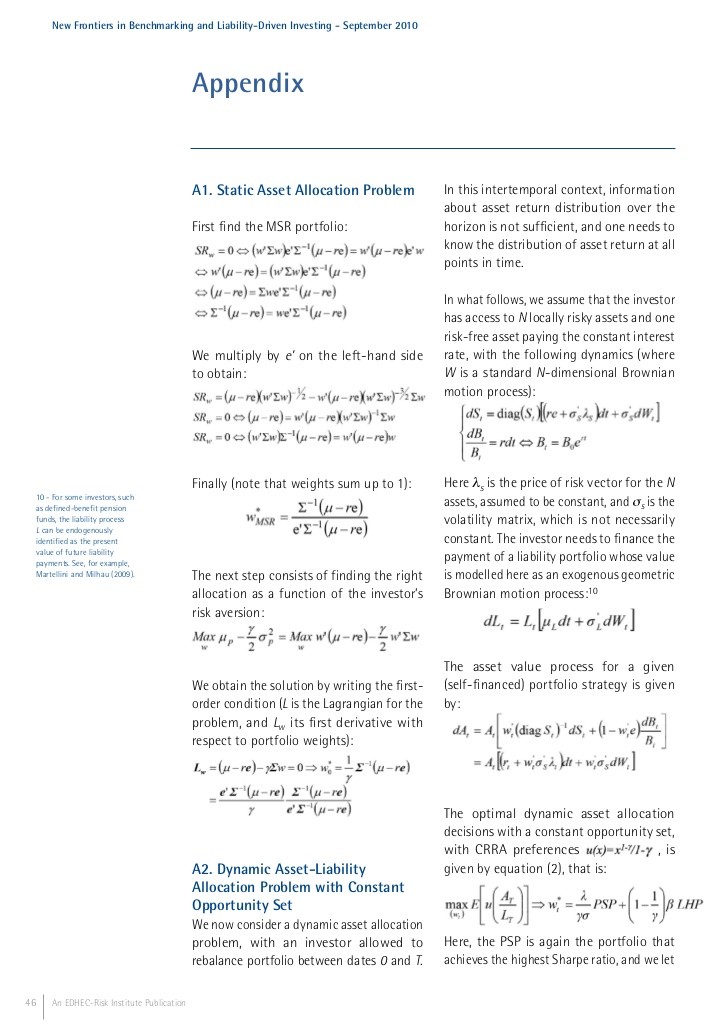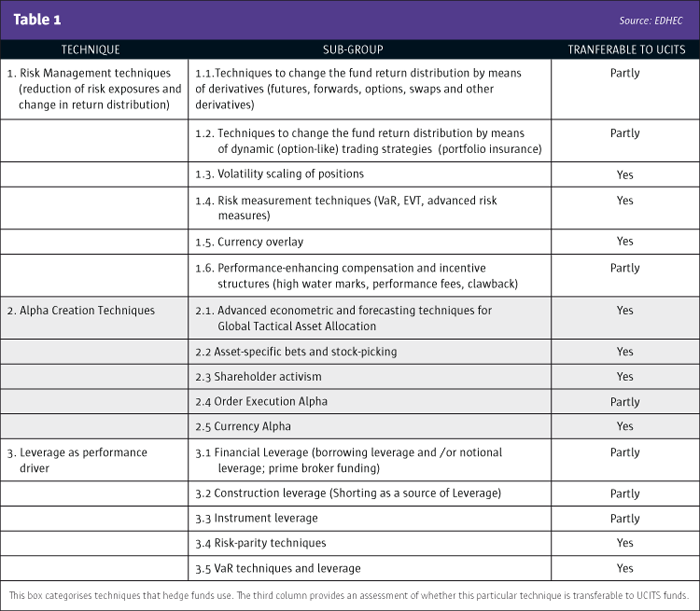EDHECRisk A quantitative analysis of hedge fund style and performance
Post on: 16 Март, 2015 No Comment

A quantitative analysis of hedge fund style and performance
Authors: Claus Bang Christiansen, Peter Brink Madsen, Michael Christensen
Date: 2003
This paper provides additional evidence on the performance of hedge funds in order to contribute to the debate over whether hedge funds obtain superior performance. The database used, provided by CISDM, covers the period from June 1st, 1999 to June 30th, 2002. The original database contains 1,014 individual funds, but it is corrected for survivorship bias, selection bias, instant history bias, multi-period sampling bias and illiquidity bias. A sample of 185 funds is obtained.
The authors use Principal Component Analysis (PCA) in order to identify relevant groups of hedge fund strategies. 5 orthogonal components allow more than 60% of the total variance to be explained. By comparing the funds that correspond to a component with their qualitative characteristics, the following groups are determined: Opportunistic/Sector, Event Driven, Global Macro, Value and Market Neutral Arbitrage. Based on these groups, five equally-weighted portfolios are constructed.
Because of the dynamic trading strategies of hedge funds, the authors choose a multi-factor model with buy-and-hold and option strategies. They follow Agarwal and Naiks methodology (2000), by including Location factors (buy-and-hold strategy) and Trading Strategy factors (option-like strategies) in Sharpes multi-factor style model. The inclusion of the factors follows a step-wise procedure, which avoids the potential problems of multicollinearity. It involves including the factors one by one, on the basis of their respective correlation with the portfolio return. The first (second) factor has the highest (second highest) correlation with the portfolio return. The step-wise procedure ends when the remaining factors are insignificant.
The equation corresponding to the extended multi-factor model is estimated for each of the five portfolios mentioned previously. The results obtained are as follows. For the Opportunistic/Sector portfolio, the factors are a bought at-the-money call option with the MSCI World and the SMB size factor. The RІ-adjusted is equal to 0.38. Alpha is positive but not statistically significant.
For the Event-Driven portfolio, the factors are a written out-of-the money put option with the Lehman High Yield index as the underlying index and the Goldman Sachs Commodity index. The RІ-adjusted is equal to 0.51. Alpha is significantly positive at the 5% level.
For the Global-Macro portfolio, the factors are the Lehman High Yield index, the Russell 3000 index and the SMB size factor. The RІ-adjusted is equal to 0.88. Alpha is positive but not statistically significant.

For the Value portfolio, the sole factor is a bought out-of-the-money call option based on the Russell 3000. The RІ-adjusted is equal to 0.28. Alpha is significantly positive.
For the Market-Neutral arbitrage portfolio, the factors are a bought deep-out-of-the-money put option with the MSCI World index as the underlying asset and the Fama and French Value-Growth factor. The RІ-adjusted is equal to 0.44. Alpha is significantly positive.
In order to check the robustness of the results, 5 random funds from each of the five strategies are selected and the regressions are carried out again. The authors conclude that the results from the 25 individual funds are close to those of the portfolios.
In summary, several common points can be highlighted across the five portfolio models. The inclusion of Trading Strategy factors in the model is relevant, as is shown by the fact that four of the five portfolios have a factor related to a dynamic option strategy. Concerning abnormal excess returns, three strategies exhibit a significantly positive alpha. Nevertheless, after the correction for a monthly survivorship bias of 0.2466%, none of the five portfolios has a significantly positive alpha.














